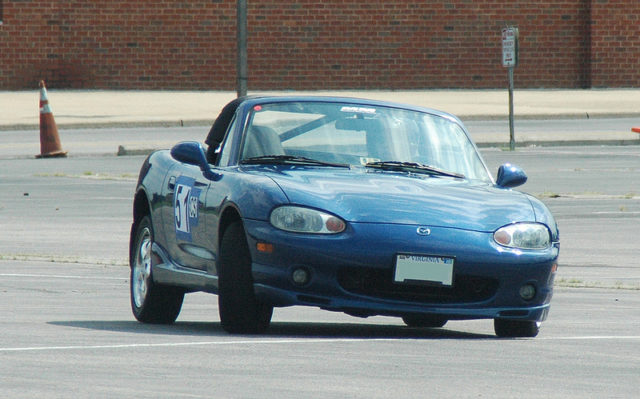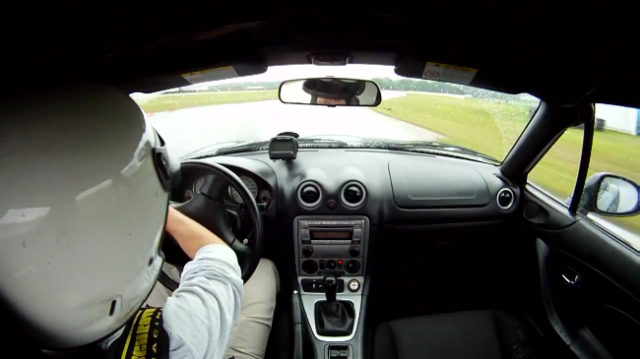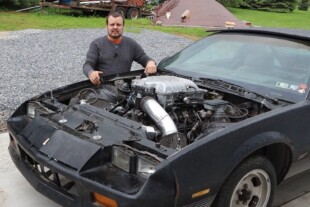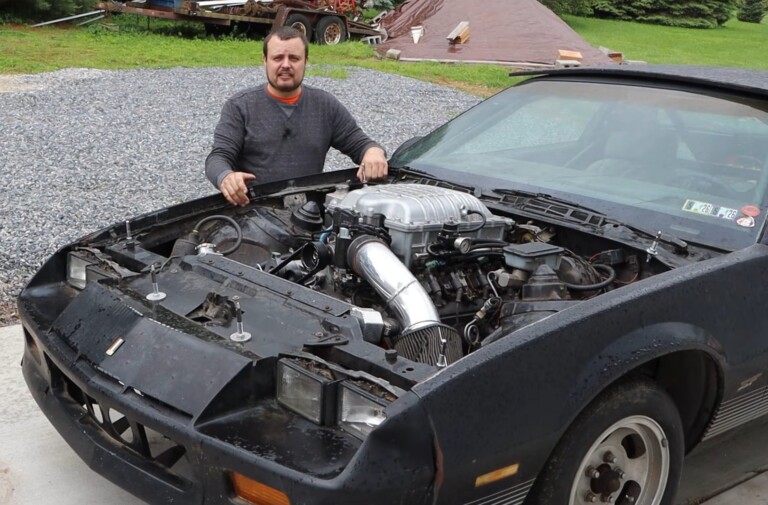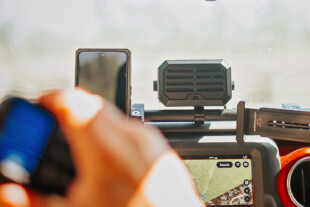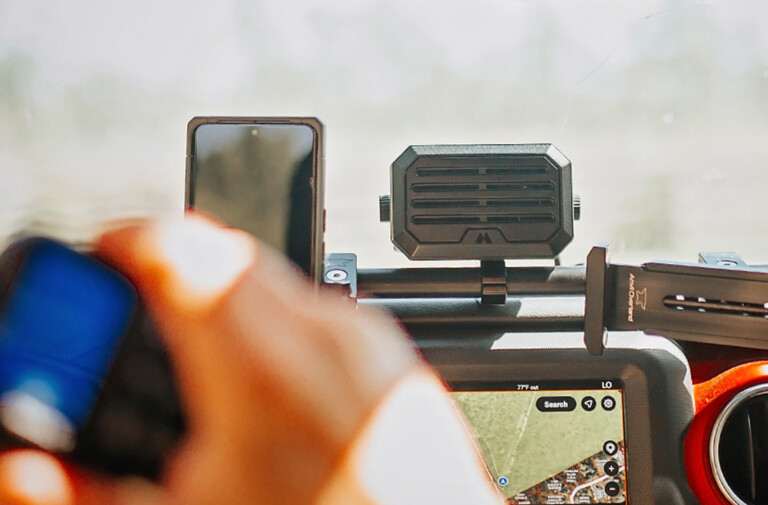Rain, low-grip, a short-wheelbase, and rear wheel-drive car is a great way to wreck, look like a hero, and/or frustrate the living hell outta yourself. It’s no walk in the park when standing water crowds every apex and 140 horsepower feels more like 600, but it certainly forces a driver to face their own limitations, and work out just how a car moves around when consistently beyond the limit. Fortunately, it happens at pretty slow speeds, and as long as you stay off the wet grass—which accelerates a car rather than slows it—you shouldn’t get into much trouble.
For some, the fearful side of grappling with the limit is losing the tail in a big ‘ol tankslapper, and facing the wrong direction. For others, the idea of driving straight on with the wheel cranked over on the lock stops gives them a heart palpitation. Either way, drivers usually figure out what they’re more comfortable with and hone their style to put them in a comfortable position more of the time.
Those that prefer a little push know how to minimize it, how to trim a line with a lift or a tap of the brake, and how not to ask too much from the front tires when the conditions don’t allow for it, or the car’s simply a little too stiff at the front end. Some people don’t mind hustling through a corner with an additional 5 degrees of slip angle at the front and keeping it tidy. Those who run the front tires a little beyond their ability and don’t trim their line with a reduction in throttle run into a specific problem in the rain they might not experience when the sun is blazing above a cracker-dry track.
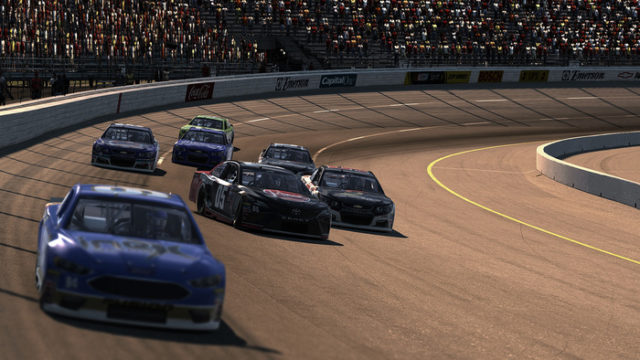
On the big ovals, too much understeer can transform into an unrecoverable tailslide. Photo credit: iRacing.com
When overall grip is diminished, it only becomes more obvious, but it’s a situation which NASCAR drivers like to refer to as “push-loose.” When the front tires lose their grip on the pavement, and the driver attempts to push through the understeer with throttle, the rears have a tendency to break away very violently; more so than they would if the fronts had been gripping before the loss of rear grip.
The reason this occurs, according to Simraceway instructor Gregory Evans, is because “the driver is dealing with an unbalanced platform, which is compounded with how the tires lose their pumping efficiency.” Since the car is already sliding at the front before it begins to lose grip at the rear, the forces generating slip angle at the front will push on the rears, which have been loosened up from too much throttle. In other words: a car gets snappier as a result of a driver piling one mistake on top of another.
Additionally, and this is applicable when the track is drenched, is that the tire’s ability to displace water—also known as pumping efficiency—is diminished. Rain grooves are designed to work at their best when the tire is moving straight down the road. When it starts to generate some slip angle, however, “not only do the tread blocks shift and distort so that channels close off, but it also rolls less, and that pumps less water,” says Evans. When the tire isn’t pushing a sufficient amount of water away, it hydroplanes.
To retain control over both the front and the rear axles, it pays dividends to be smooth. This applies to the steering, but even more so to the throttle. As Evans instructs, “Snappiness happens when mistakes build on each other. If you are smooth, it is easier to minimize mistakes.”
The difference in breakaway between a standard oversteer situation and a push-loose situation is visible within the first minute of the above footage. Though steering sweetly and gently, he gets a little more gusto around 0:43 and pushes into a corner with just a hint of understeer, then BAM! Out snaps the rear ferociously—and he has to back out of the throttle to avoid a spin. Though this is held beautifully, but it’s obviously a dependable way to add a couple seconds to the lap time.
While Guillermo—this particular driver—holds most slides with control and precision, even mild amounts of understeer—like the kind seen at at 3:00—help bring the tail out abruptly. Compare the throttle application there to the kind used during some of his more progressive slides. In the case of the snap oversteer moments, he has to back out of the throttle and kill some of that momentum, which really hamper an underpowered Miata’s progression, but a smooth weight transfer to the rear with a little throttle oversteer is manageable and quick.
Don’t let that sound like a criticism of Guillermo’s driving. Not only does he catch most of the slides like a true ace, but he’s willing to push the car into spinning in the higher corners; he genuinely enjoys balancing the car beyond the limit. With a triumphant chuckle after his last big spin, you can’t but help wonder what second-generation Miatas are going for these days—and whether they need a V8 to be fun.



